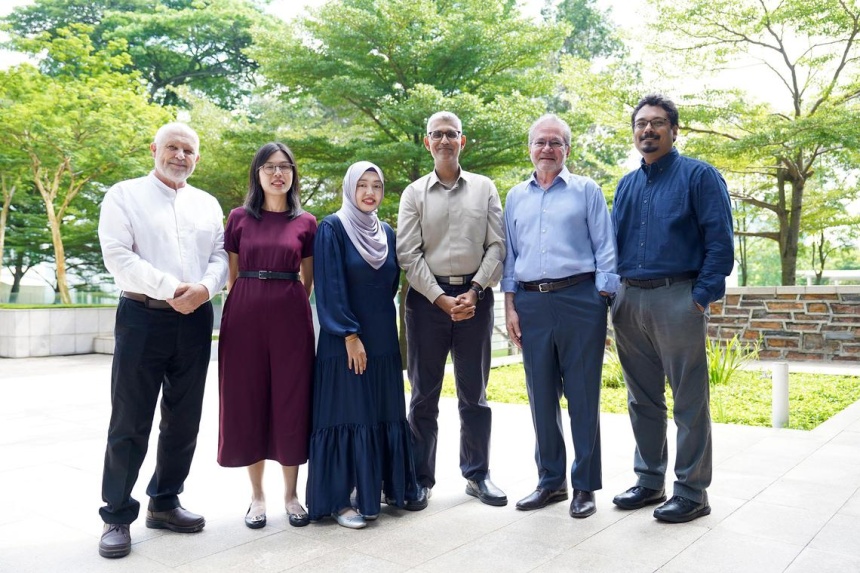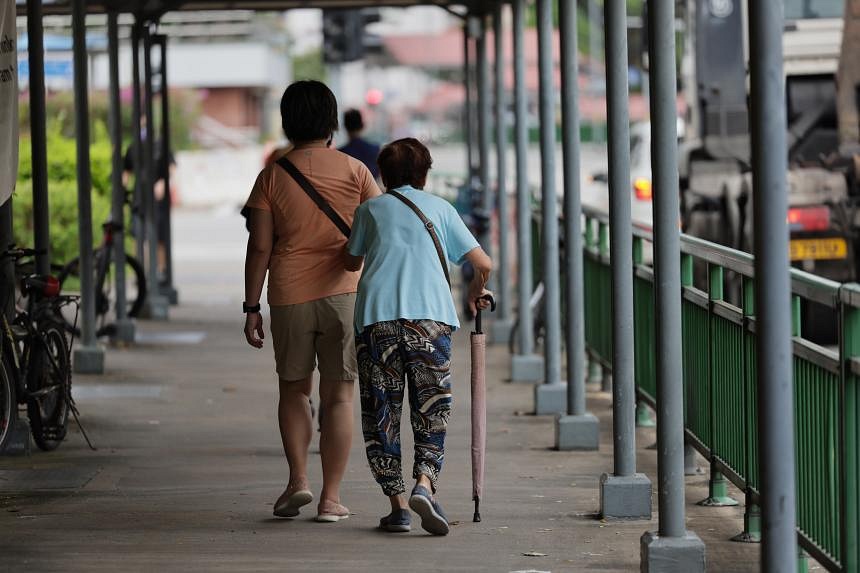SINGAPORE - The cost of informal caregiving for seniors in Singapore comes up to $1.28 billion a year, a recent local study has found.
The Duke-NUS Medical School study, published in the Aging And Health Research journal in June, also found that caregivers provided on average 33 hours of care each week, helping seniors aged 75 and above communicate with others, managing their needs and providing emotional support.
The study is the first in Singapore to estimate the economic value of informal caregiving time in the context of Singapore’s rapidly ageing population.
Its results showed that seniors received on average 60.5 hours of care each week from their primary and secondary caregivers.
Primary caregivers include adult children, spouses and other family members. Secondary caregivers most commonly comprise migrant domestic workers and the caregiver’s siblings.
Duke-NUS’ Centre for Ageing Research & Education (Care) principal research scientist Abhijit Visaria said this niche in informal eldercare was chosen because such care, provided by family members and friends, is an integral aspect of the care provided to older adults here.
Researchers utilised data from Duke-NUS’ Caregiving Transitions among Family Caregivers of Elderly Singaporeans study, which was conducted from 2019 to 2020. Nearly 280 pairs of primary or main informal caregivers and recipients were surveyed for the study.
Primary caregivers reported the time spent by themselves and other caregivers in caring for their ward in the study.
To calculate the cost of informal caregiving time, Duke-NUS researchers used the 2019 median hourly gross wage of a full-time healthcare assistant and other personal care workers, which ranged from $8.39 to $11.22 per hour.
They found that the time spent by primary caregivers was worth $15,959 annually and $4,062 for that of secondary caregivers.
To calculate the total caregiving hours nationwide, they then estimated the number of residents aged 75 and above in Singapore who required caregivers to perform daily activities.
The monetary value of migrant domestic workers who were involved in caregiving was not included in the study as they are salaried employees and not informal caregivers. This group spent about 42 hours a week caring for seniors.
The researchers said the study’s findings aim to provide insights for policies to better support caregivers.
Such policies include the Agency for Integrated Care’s Home Caregiving Grant, which provides care recipients with a monthly payout of $250 or $400, depending on their household per capita income.

Madam Ong Hong War, 84, a retired nurse, spends about 40 hours a week taking care of her 89-year-old husband Soh Eng Chew.
At home, she monitors him to ensure that he does not fall and hurt himself, has normal blood pressure levels, goes to the toilet regularly and is rarely left alone.
Madam Ong has been looking after her husband for at least 12 years since his ability to walk declined with age.
She drives him to his quarterly follow-up appointments at Ang Mo Kio Polyclinic and urology appointments at Sengkang General Hospital twice a year.
He often waits in the car when she leaves their home to shop for groceries so she can keep an eye on him, instead of leaving him alone at home.
Senior vice-dean for research at Duke-NUS Patrick Tan said it is important to acknowledge that without informal caregivers, formal care services would face a significantly higher burden of care, straining social services and healthcare budgets.
Professor Tan added: “We hope that more efforts can be made to encourage and empower informal caregivers with practical tools and supportive communities, so that no caregiver is alone.”
In the absence of informal care, intermediate and long-term care expenditure would likely be even higher, the study found.
Healthcare expenditure in Singapore is projected to rise to $59 billion by 2030, according to the Ministry of Health.
Duke-NUS’ Care senior research assistant and first author of the study Nur Diyana Azman expects the value of informal caregiving time to have grown since the data was collected in 2020, because there are now more seniors having more difficulty performing activities of daily living such as showering or eating, leading to more caregiving hours.
She said that by 2050, projections indicate that one in six adults aged 55 and above would have difficulty carrying out at least one activity of daily living. This is an increase from 2014, when one in 12 fell in this category.
According to the Government’s 2023 population report, citizens aged 65 and above make up 19.1 per cent of the population, an increase from 11.7 per cent in 2013.
It is estimated that around one in four citizens will be aged 65 and above by 2030.
Duke-NUS’ Care deputy director Rahul Malhotra said: “It is tough to say what might happen if Singapore’s care models do not change. But we can expect mean informal caregiving hours to remain similar in magnitude over time.”
The associate professor added: “With reduction in family sizes over time, we can also expect fewer secondary family caregivers, which may result in higher mean informal caregiving hours provided by primary informal caregivers or higher mean caregiving hours by migrant domestic workers.”
The researchers said the study’s limitations include the challenge of accurately measuring caregiving hours and having to rely on primary caregivers to report on the caregiving hours spent by secondary caregivers.

